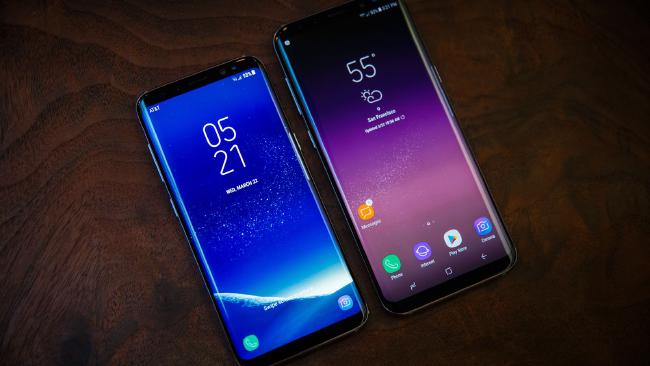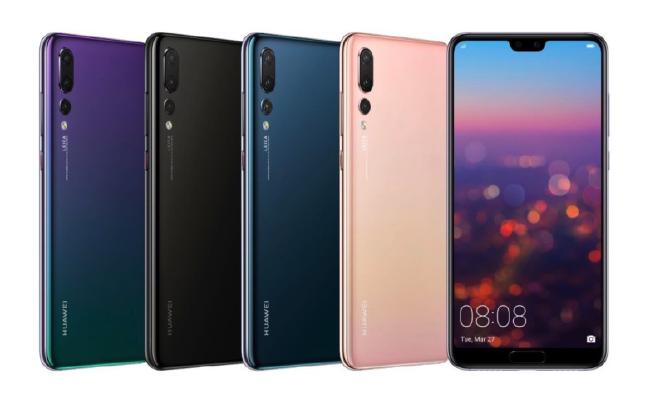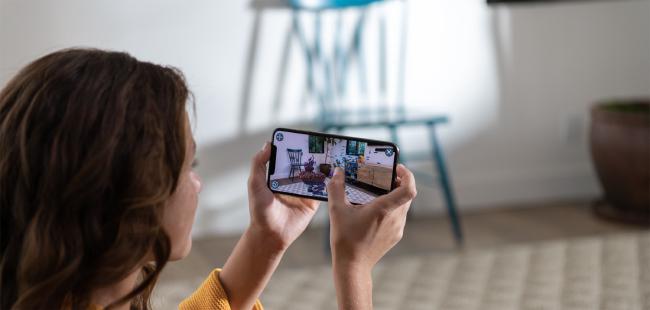Categories
Flagship vs Midrange vs Budget Phones
7 minute read
Every year, the top smartphone manufacturers release dozens of smartphones between them. Usually, they fall into different price points. As a consumer, trying to understand the difference between these flagship, midrange and budget phones can be difficult.
What’s worse is that each manufacturer does things differently, blurring the lines of these specific price points. In this article, I want to clear the confusion by explaining the different price points clearly and I’ll also show how each manufacturer takes a different approach.
Understanding Terms - Premium vs Flagship vs Midrange vs Budget

Before we take a look at each individual manufacturer’s offerings, let’s take a quick overview of what each of these terms mean. Starting from the top, we have premium smartphones. These usually have bigger displays, additional hardware, and sometimes extra features. Examples include the Note9 or the iPhone XS Max.
Premium smartphones are typically aimed at diehard smartphone fans. The extra price for these premium devices usually isn’t worth it for average smartphone users. For those who want the absolute best experience, they can be worthwhile.
Next, we have flagship devices. This is where most manufacturers will divert the most attention. The word flagship originates from naval terminology, and in this case it’s used to describe the leading product. Flagships have the latest hardware and they are still quite pricy, but they’re more reasonably priced than premium options. For most people, a flagship is the go-to choice. Examples include the iPhone XS or the Galaxy S9.
Next, we have the midrange price point. This includes smartphones that are a step down from the flagship. Usually, they are far cheaper, and considerable sacrifices have been made to some of the hardware components to reach a more affordable price. Examples include the iPhone XR or Galaxy A7. Midrange smartphones are great options for those that want a fluid experience, but don’t want to pay too much for all of the bells and whistles.
Finally, we have the budget price point. Typically, many more sacrifices are made to reach this lower price point and in some cases, the end user really feels it - the phones may feel slower, or the display may not be as high resolution. These phones are designed for those that are on a strict budget and they are willing to sacrifice as many features and performance to get a new smartphone for basic use.
It should be noted that not all manufacturers release products to fill each of these four price points. OnePlus, for example, only release a premium and flagship offering each year. Okay, with that of the way, let’s take a look at some of the different product lineups from some of world’s top smartphone manufacturers.
Samsung

Samsung releases a huge range of smartphones each year, most of which you will probably have never heard of. However, there are four main product lines that will be most familiar to us UK users, and they offer differing experiences.
-
Galaxy Note range - Premium, starting at £899
-
Galaxy S range - Flagship, starting at £699
-
Galaxy A range - midrange, starting at £249
-
Galaxy J range - Budget, starting at £149
Galaxy Note Range - Premium
This is where Samsung throws its very best tech and software features each year, usually in the third or fourth quarter. The latest Note smartphone is the Note9, and it starts at £899. For this price, you get Samsung’s largest display, the S-Pen stylus, a suite of stylus-focused features, and hardware that’s just a tad better than the Galaxy S range.
Galaxy S Range - Flagship
The Galaxy S range is the flagship, and for Samsung, they like to release two variants. The latest smartphones include the Galaxy S9 and the S9+. Both offer very similar hardware, but one has a slightly larger display. With Samsung, the Galaxy S range doesn’t have the S-Pen, but performance is still super smooth and you can always rely on Samsung to include a great camera and powerful hardware.
Galaxy A Range - midrange
The offering in Samsung’s A range branches into many different options at prices between £249 and £349. The Galaxy S design footprint is usually mimicked. However, to reach the lower price range of £249-£379, Samsung often includes slightly less RAM, less battery, a smaller display, and a less powerful processor. It starts at the A9 and goes down to the A3. As you go down, more sacrifices are made to reduce the price.
The hardware in the A range is still usually enough for almost every task you can throw at it, although you may notice strain when playing 3D action games or running many apps simultaneously.
Galaxy J Range - Budget
Samsung’s budget lineup, the J range, starts at £149. The cheapest model, the J3, has almost everything stripped from it, and performance will be quite flaky. Step up to the J5 or J6, however, and you’ll get a smartphone that works reasonably well, usually for around £219-£249.
Huawei

Huawei also releases an abundance of smartphones every year and things get a little confusing, especially at the low end. Their products at the high end are priced similarly to Samsung, but their midrange options are absolute bargains. Here is a look at the different lineups you’ll often find in the UK.
-
Huawei Mate range - Premium, starting at £899
-
Huawei P range - Flagship, starting at £249
-
Various Huawei Phones - midrange and budget, various prices
Huawei Mate range - Premium
The Huawei Mate range is essentially Huawei’s very best offering. We wrote more about the differences of the Huawei Mate phones here, but in summary, you have a Lite, a standard, and a Pro version. As of writing, giffgaff supports the Huawei Mate 20 Pro, which starts at £899.
Huawei P range - Flagship
The Huawei P range this year included three very differently priced smartphones - the P20 Lite at £249, the P20 at £449 and the P20 Pro at £649. At the high end, you get top of the line hardware and an excellent camera. In the middle, small sacrifices have been made to the camera and hardware, but overall the P20 is still an excellent phone. Finally, the P20 Lite takes another small hit to the camera and hardware, but for £249 you still get 4GB RAM and a decent processor.
Huawei’s midrange and Low End Smartphones
Huawei offers a wide range of different low end and midrange smartphones. If you’re looking for a reasonably priced Huawei phone, the P20 Lite is a good place to start. Otherwise, you can opt for something like the Y7 or the P Smart, both of which are under £150.
Apple

Apple likes to tease us with prices that tower over Android smartphones, but they still offer phones at three distinct price points. If you want to go cheaper, you have to opt for an older generation. For now, though, Apple offers the following smartphones.
-
iPhone XS Max - Premium, starting at £1,099
-
iPhone XS - Flagship, starting at £999
-
iPhone XR - Budget, starting at £749
If you buy any of the latest iPhones, you’re guaranteed a fluid experience with some of the best hardware Apple has to offer. For many people, paying out for a new iPhone is out of the question. As a result, many people will often buy an older generation. Apple still supports their old smartphones and often still sells them as new, sometimes for up to 5 years.
For example, you can purchase the iPhone 8 from giffgaff for £589, or even the iPhone 6 for just £279. In many ways, the older generation iPhones become comparable to new budget and midrange releases from Android manufacturers like Samsung and Huawei.
Summary
Hopefully this clears up some confusion on how different price points are used by manufacturers when releasing new phones. All of the manufacturers and phones mentioned in this blog are available from giffgaff, so if you’re after a new handset, make sure to stop by our mobile phone page.




